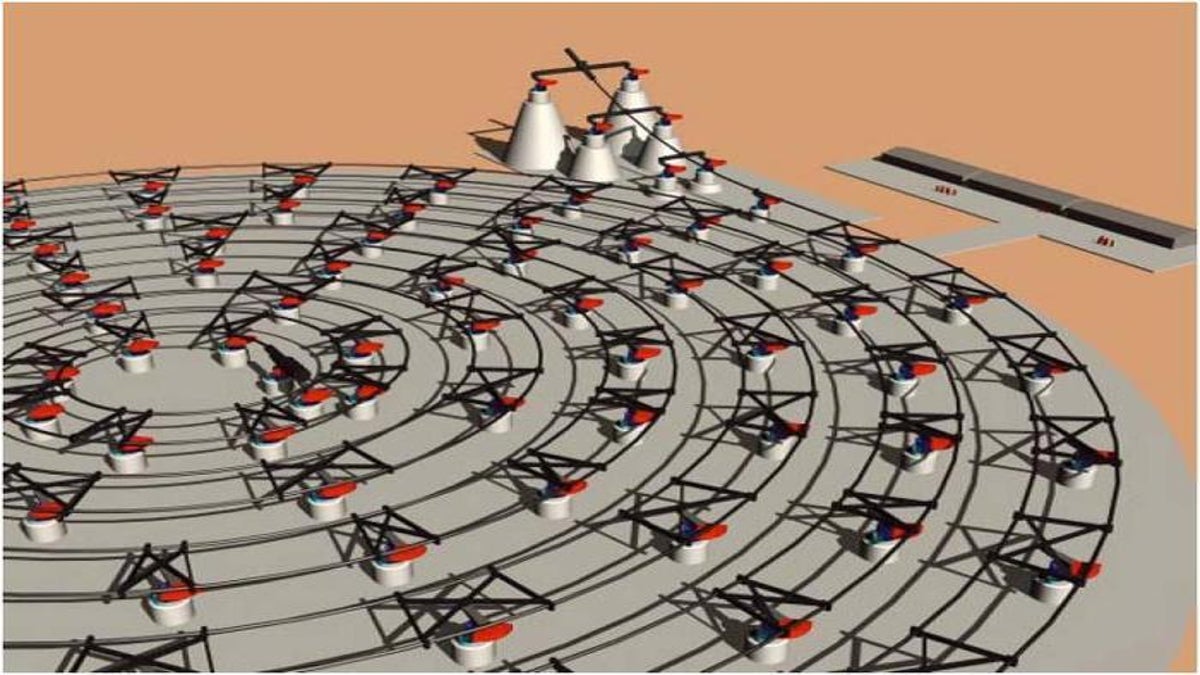 Why You Can Trust CNET
Why You Can Trust CNET Could this hypervelocity coil launch ships into space?
It looks like an enormous mosquito coil, but the Slingatron is designed to be a cheaper way to put bulk cargo into orbit.

If you read the endorsements from NASA scientists on Derek Tidman's book, his idea may seem a tad less wacky than at first blush.
He thinks a massive, gyrating coil can speed up objects fast enough to give them escape velocity and send them into orbit.
The book outlined the concept. Now he's trying to build a large prototype launcher with Kickstarter backing. It's called the Slingatron.
From space elevators to mass drivers and floating launchpads, there have been many proposals to launch things into Earth's orbit without chemical rockets.
The idea is to dramatically reduce the cost of launches and accelerate space development. Launching a small, 4-inch cube satellite on a conventional rocket, for example, can cost $85,000 to $125,000, according to the campaign.
The Slingatron is an electrically powered coil, up to 328 meters across, that works like an old-fashioned overhead sling weapon. If you twirl an object in the sling fast enough, it can achieve high speeds before it's released.
It would have a spiral launch track on a modular platform that could gyrate at 40 to 60 cycles per second. That exerts a strong centripetal force on the payload, which is released at the center and accelerates to speeds of 4.3 miles (7 kilometers) per second as it travels through the coil.
"A payload launched in this manner will require a launch velocity sufficient to compensate for the small loss traversing the atmosphere, plus a small on-board delta-V capability needed for final orbit insertion and circularization," says the campaign page, which is organized by Virginia R&D company HyperV Technologies.
"The latter will typically be accomplished with a small on-board kick motor. The result is a complete land-based electrically powered Earth to orbit launcher."
The forces acting on the payload would be too great for humans to bear, so the Slingatron wouldn't be for astronauts. But it could be used to launch bulk materials such as water, fuel, and building materials, as well as satellites that have been hardened to bear the g-forces.
The launch system would be nearly completely reusable and capable of "many thousands of launches per year," according to the campaign.
So far, three small Slingatron prototypes have been built. The most recent had a diameter of about 1 yard and managed to accelerate a half-pound payload to 109 yards per second. Check out a demo in the vid below.
HyperV is seeking $250,000 to build a Slingatron with a coil diameter of about 5.5 yards that will launch a 1-pound payload at a neck-snapping 2,237mph, or 1kps.
Backers of the campaign will get rewards, like Web cam views of the demonstration, copies of Tidman's book, or special access to Slingatron development. No, you don't get to be a guinea pig payload.
Check out details of the campaign here. What do you think? Is this a crackpot idea or something that deserves serious attention?

